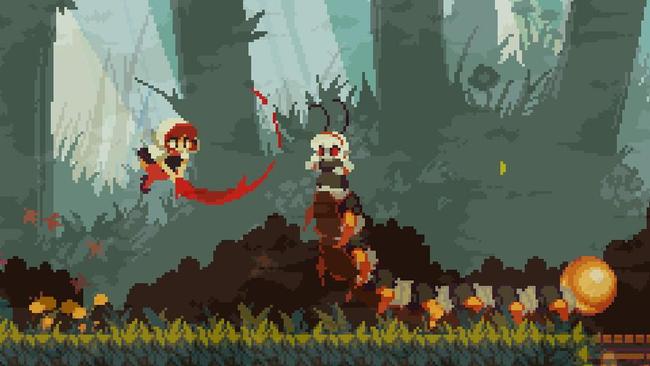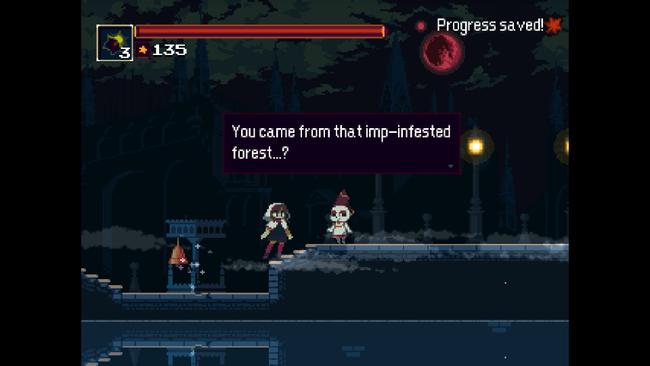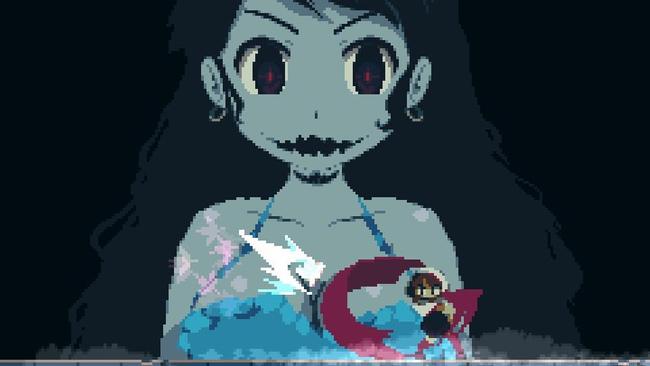
Momodora: Reverie Under the Moonlight Review
It has been nearly 20 years ago to the day Castlevania: Symphony of the Night came out and redefined action platformers forever. So it's quite fitting that Momodora: Reverie Under the Moonlight is here to remind us just how engaging the genre can be. The game has been out on PC for about a year now, but it's finally making its console debut today. If you missed out on first go around, then you best not miss out this time.
Editor's Note: Momodora: Reverie Under the Moonlight is actually the 4th game in the Momodora series, but for the sake of formatting I will be refering to the game as just "Momodora" for most of this review.
In Momodora, you play as a young girl named Kaho - a priestess hailing from the villiage of Lun. Kaho is charged with traveling to the kingdom of Karst in order to stop a curse that has spread to her villiage. She soon discovers that in order to cleanse the land of this curse, Karst's queen must be killed, as the queen is the source of this evil.

Momodora's story isn't particularly engaging on its own and I wouldn't recommend the game based on that aspect alone. It's fairly standard high fantasy stuff, buy there is something about the presentation that makes the player feel invested in what's going on in the plot. Throughout the journey you'll meet various NPCs that give you a lot of backstory on the events that transpired in Karst and how the curse came about.
I couldn't help but want to learn more about the likes of the knightess Cath, who helps Kaho several times along the way. The overarching story may not be the sole reason to play this, but if you dig deeper, you can learn a lot of interesting tidbits about the world.
Eariler I mentioned that the presentation in Momodora adds to the world's believeablity, and I think a lot of that stems from the color palette used. The whole game looks like it's set in the fall time with it's use of a lot of muted browns, oranges, and reds. It makes all the environments feel very melancholic, especially when combined with the 16-bit inspired graphics. It's kind of hard to put into words but the game just looks phenominal; it's a world greater than the sum of its parts.
The most important part of any action platformer is its gameplay, and thankfully Momodora: Reverie Under the Moonlight is no slouch in this area. The controls feel very responsive and quick. Bobbing and weaving around levels is fantastic, especially as you narrowly escape from the various attacks enemies throw at you.
There's a lot of pixel-perfect execution required in Momodora, especially if you're playing on the tougher difficulties. Initally a roll will be your go-to for avoiding damage as it has invincibility frames. The more you play the game, the more abilities will be added to your array of options. For example, there's a dash ability I discovered that helped a lot with some of the tougher platforming sections.

Combat is your pretty standard affair for this sort of game - lots of up-close melee battles with glass cannon-like enemies. Everything feels really weighty and satisfing to slash at; that's saying something considering your primiary weapon is a maple leaf. There's also a bow that helps with ranged enemies and even some smaller puzzle sections in the game. There's a wonderful ebb and flow to combat if you intersperse ranged attacks with melee.
Now you're probably wondering what specifically about this game appeals to readers of RPG Site. While I would not strictly call Momodora an RPG, there's a lot here that draws from favorites of the genre. Save points function exactly like bonfires in Dark Souls in that they replinish your health and your primary healing consumables. Obviously, there's a lot of influence from Symphony of the Night in how picking up gear and items boosts your character's ability set, too. There's no leveling mechanic, but there's an important progression curve all the same.
If you're the type of person that plays through a game once and never touches it again, then Momodora may not be the game for you. A standard playthrough will probably take you around 5 hours if you're playing on normal, less if you don't go for the true ending. There's a lot to unearth in Momodora be it items, abilities, hidden areas, and even optional boss fights.
My advice is to take your time and explore as much as you can. Once you gain a new ability, make sure you return to previous areas and see if you can use your new found skills to find secrets. It may be a short game on paper, but there's a wealth of content here waiting to be found.

One thing I'd like to mention about Momodora is that is very friendly to players that haven't played games of the metroidvania-ilk before. The game offers you several difficulty options before starting that feel balanced accordingly. I played through the game twice: once on easy, and once on normal. Normal is basically the mode for people that've been playing this sort of game for over 20 years, while easy allows newbies like myself chance to relax and take it all in.
This may sort of sound redundant to compliment a game for difficulty options, but traditionally, action platformers like this are not friendly at all to new players. I respect that sort of challenge, but I also respect that Momodora's developer Bombservice is cognizant that not everyone playing their game will have the experience of a speedrunner.
Momodora: Reverie Under the Moonlight won't light the action platformer world on fire or usurp the greats of the genre like Castlevania, but it's got a lot of heart. I don't consider myself a complitionist, nor am I particularly good at this sort of game, but there is something about Momodora's bleak atmosphere that kept drawing me back to it. It's a strong example of how great art direction and solid game design can come together to make well-trodden paths feel fresh.